Komondor Dog Breed
The Komondor dog, with its distinctive corded coat that resembles a mop, is a striking example of how form meets function in dog breeds. Hailing from Hungary, this breed is known for its large size and calm yet alert nature. These traits have made it a reliable protector of herds for generations.
Despite its robust appearance, a Komondor can become a well-adjusted family member with the proper socialization and training. However, caring for a Komondor, addressing its health issues, and meeting its nutritional requirements can be as complex as untangling its unique coat. Understanding the Komondor involves looking at its upkeep and the cultural background that has influenced its evolution. This goes deeper than its visually captivating look.
The Komondor is not just a pretty face; it requires a lot of care and attention. Owners need to be mindful of their breed-specific needs. For example, their coat needs regular grooming to prevent matting, and they may be predisposed to specific health conditions that require attention. Their diet must also be carefully considered to keep them in optimal health.
When considering a Komondor, it’s essential to recognize the dedication needed to maintain this magnificent breed. Emphasizing the Komondor’s care needs helps potential owners understand the commitment required for these dogs.
Key Takeaways
- Komondors originate from Hungary and are known for herding and protection.
- Proper training and socialization ensure a well-behaved family pet.
- Grooming and health maintenance are vital for a Komondor’s care.
Quick Facts
The Komondor is a large and powerful dog breed, with females standing at least 25.5 inches tall and males at a minimum of 27.5 inches. Females weigh from 80 pounds and males from 100 pounds. Classified under the Working Group by the American Kennel Club, they have an average lifespan of 10 to 12 years. This breed originated in Hungary, descending from ancient dogs brought over by the Cuman people in the 12th and 13th centuries.
Known for being alert and protective, the Komondor excels in guarding livestock such as sheep and goats, which has made them increasingly popular in the United States. They are good with pets they know but may not tolerate strange animals in their space.
Their most notable feature is their unique coat, which can grow up to 27 cm long and takes about two years to develop fully. This corded fur acts like armor against predators and takes a long time to dry, around two and a half days, after the dog has been washed.
Komondor Dog Breed Pictures
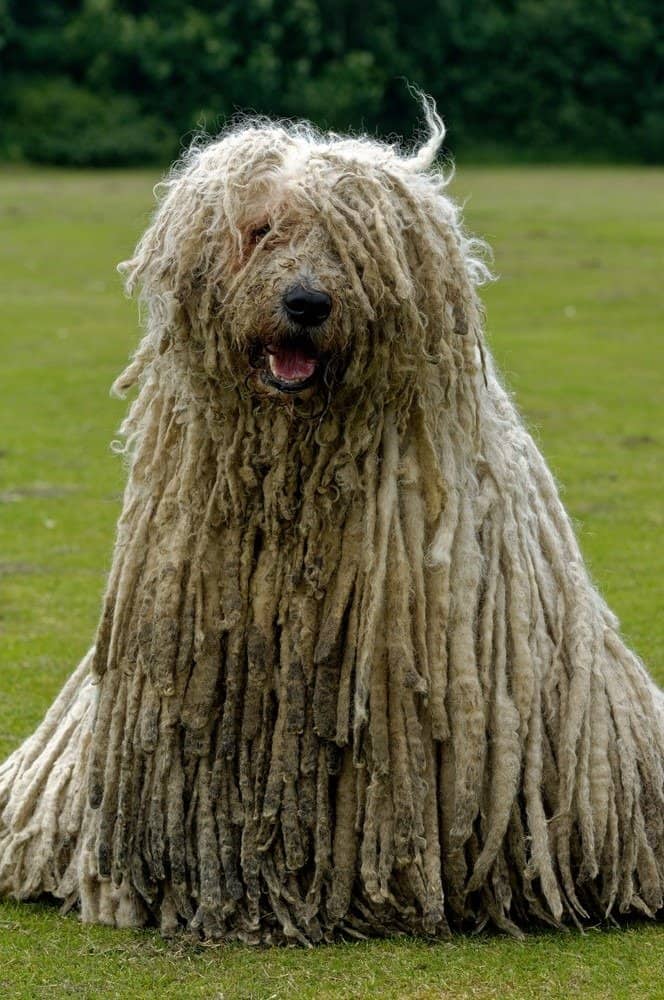
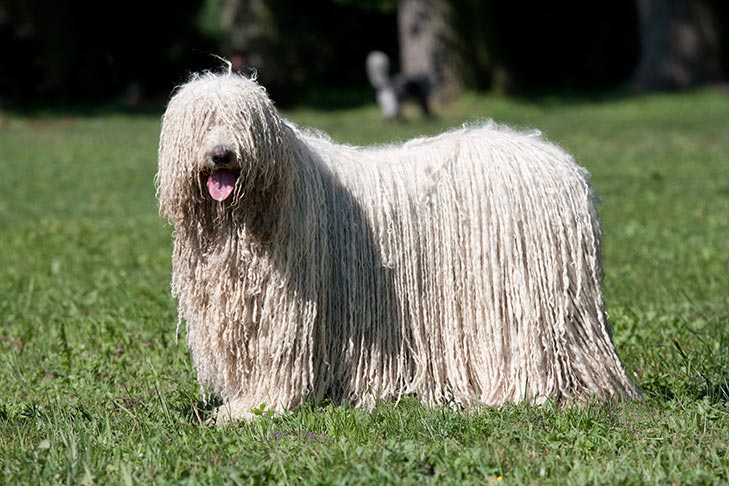
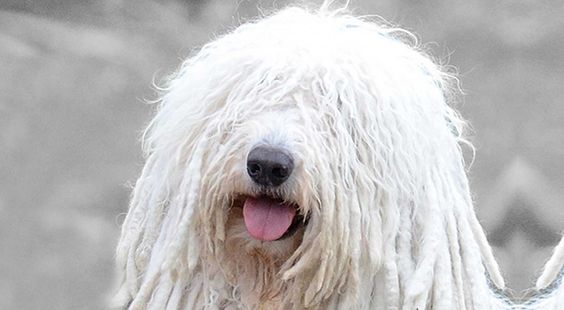
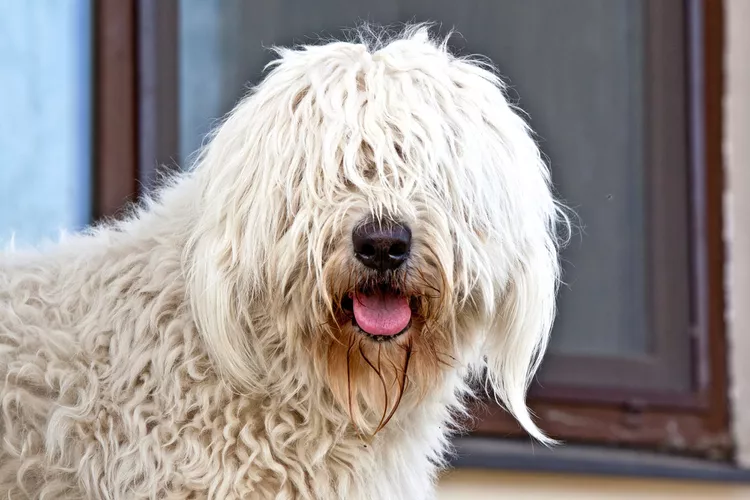
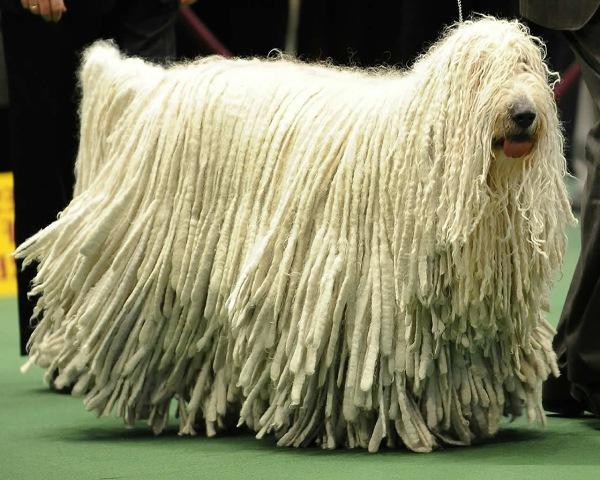
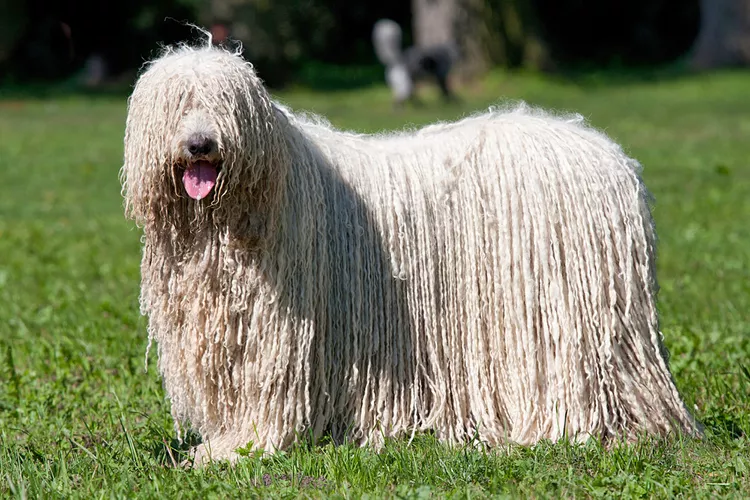
Overview
Hailing from Hungary’s serene countryside, Komondors are impressive dogs known for their unique corded coats and steadfast nature, perfect for protection roles. Thanks to their blend of strength, bravery, and loyalty, these dogs have been bred over generations to guard livestock. The Komondor is a large breed, and its white cords provide insulation and help it blend in with sheep, making it an effective guardian.
Komondors are alert and possess protective solid instincts, so early socialization is vital to manage their natural tendencies. They need thorough dog training to ensure their defensive behavior suits family life. Caring for a Komondor’s coat is essential to prevent tangles and keep the dog clean.
People thinking about getting a Komondor must realize that these dogs thrive when they have a job, like guarding animals. They also need to be prepared for the breed’s specific grooming requirements and to provide a setting where the dog’s protective skills are utilized and appreciated.
Corded Coat Characteristics
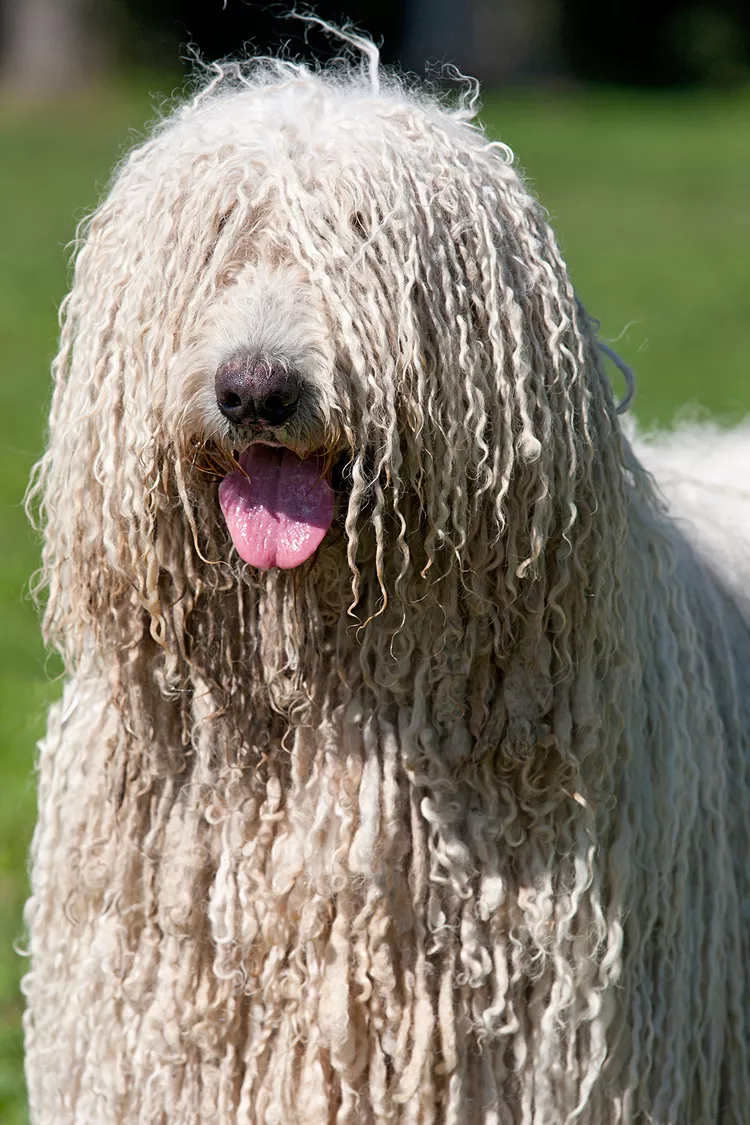
The Komondor dog is easily recognized by its distinctive corded coat. Over about two years, this coat naturally develops into a series of thick, white cords reminiscent of a mop. It doesn’t just look unusual; it also protects the dog from harsh weather and predators, reflecting its past as a guardian of livestock.
Owners of Komondors must devote time to coat maintenance. The cords must be manually separated to avoid tangling and clean out dirt. After a bath, the coat’s drying time can extend beyond two days, requiring the owner’s patience. As Komondors age, their coat grows longer and may even drag on the ground. If the dog is active outdoors, its coat may appear less white due to dirt and less frequent baths.
| Feature | Description | Maintenance Requirement |
|---|---|---|
| Formation | Develops into cords over time | Hand separation of cords |
| Appearance | Resembles white dreadlocks | Bathing and extended drying times |
| Protection | Against weather and predators | Regular cleaning |
This chart breaks down the Komondor’s unique coat’s key elements and care needs, emphasizing the breed’s distinctive grooming requirements.
Origins in Hungarian Culture
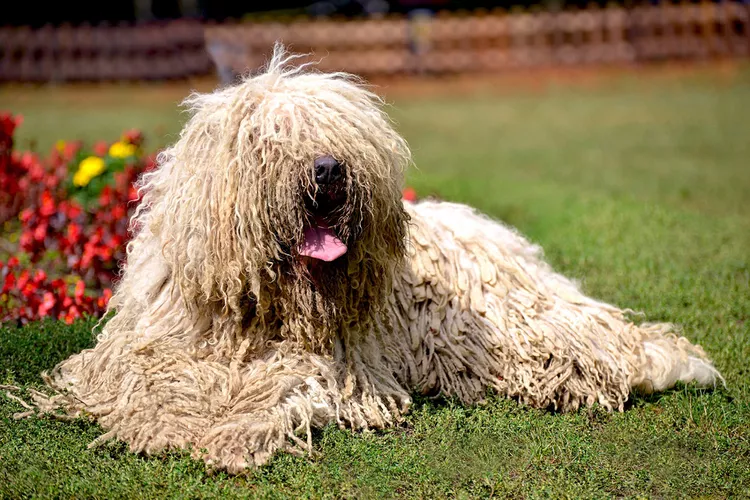
The Komondor, a dog breed with a unique appearance, is tightly woven into the fabric of Hungarian culture. This breed isn’t just another herding dog; it symbolizes Hungary’s protective instincts and pastoral way of life. Over the years, the Komondor has become an integral part of Hungarian traditions.
Hungarian Heritage: An emblem of Hungary’s rural legacy.
Cultural Impact: Cherished as a guardian and symbol of national pride.
Breed Development: The Komondor has evolved from its ancient origins to meet contemporary needs.
The Komondor breed, known for its corded coat, is an iconic figure in Hungary. It’s more than a dog; it’s a guardian of Hungarian history and rural customs. The Komondor has adapted, showing its versatility and importance in Hungarian culture.
Connection to Hungary: A testament to the country’s shepherd history.
Cultural Importance: Esteemed as a protector and a part of Hungary’s identity.
Breed Advancement: The Komondor’s journey from historical roots to present-day roles.
Hungarian Roots
The Komondor dog is a living piece of Hungarian history, with roots in the 12th century. These dogs came from Tibet and were by the side of the nomadic Cumans when they sought refuge from the Mongols in Hungary.
‘Komondor’ comes from ‘Koman-dor,’ referencing the breed’s connection to the Cuman people. Historical records, like Kákonyi Péter’s 1544 work ‘History of King Astiagis,’ mention the Komondor, proving its profound historical significance to Hungary.
As descendants of Tibetan dogs, Komondors represent the lasting bond between the Cumans and Hungarian culture, showcasing how the fusion of different cultures has enriched Hungary’s history.
Cultural Significance
The Komondor dog breed has deep roots in Hungarian culture, tracing back to when the Cuman people, a Turkic nomadic group, brought these dogs to Hungary. Known for their distinctive, corded coats, the Komondor’s name, which comes from ‘Koman-dor,’ highlights its connection to the Cuman heritage. These dogs have been a part of Hungary since the 12th century, serving as vigilant protectors of flocks and integral to the livelihood of shepherds.
In Hungary, the Komondor is more than just a dog; it’s a national symbol of the country’s pastoral traditions and a nod to the past. Its unique appearance isn’t just for show – the breed’s thick, corded fur is armor against predators. This dog is a living link to Hungary’s history, reminding people of the Cuman’s influence and the importance of livestock to the nation’s development.
Hungarian culture, Komondor breed, and pastoral heritage are deeply intertwined.
Breed Evolution
The Komondor dog breed has deep historical roots, dating back to when the Cuman people settled in Hungary during the 12th and 13th centuries. Originally from Tibet, these ancient dogs found a new home in Hungary as the Cumans sought refuge from the Mongol attacks in the late 10th century.
The Cumans, skilled in herding, relied on the Komondor’s instinct to guard their flocks on the expansive plains of Hungary. The breed’s name, Komondor, pays homage to its Cuman origins.
The breed became an integral part of Hungarian culture, with the earliest written record of a Komondor appearing in 1544 in ‘History of King Astiagis’ by Kákonyi Péter, reflecting its deep-rooted connection to the region.
Large Breed Dimensions
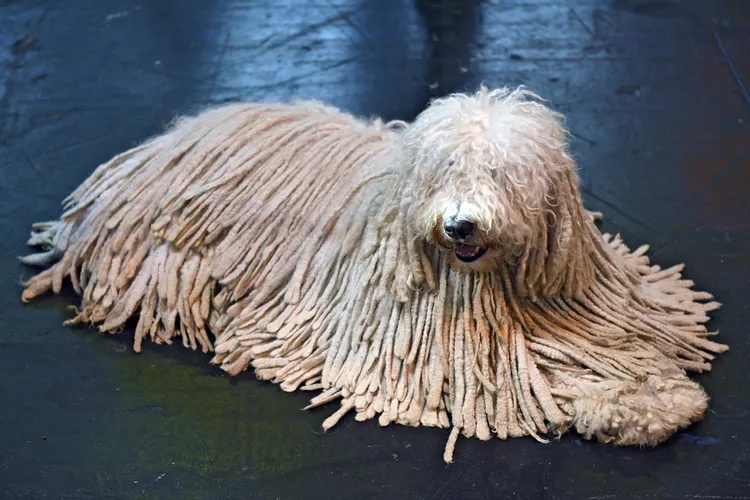
The Komondor breed is known for being a large and powerful protector of livestock, where its size plays a crucial role in warding off threats. To fully appreciate the breed’s needs, it’s essential to look at their height and weight, which are vital in determining how much living space and exercise they require. These aspects are also crucial in planning for their diet and healthcare.
Understanding a Komondor’s Height and Weight: Key Factors for Potential Owners
Komondor dogs are impressive in stature, a fundamental trait for safeguarding herds. Prospective owners should know the breed’s physical dimensions to understand what owning such a dog entails. This includes how much room they’ll need at home and the scale of their dietary and exercise needs.
Living with a Komondor: What Space Do They Need?
To properly house a Komondor, ample space is necessary. This is to ensure they can move around comfortably and maintain their health. Owners must consider the breed’s size when arranging their living space so the dog doesn’t feel confined or stressed.
Komondor Size Overview
Komondor dogs are known for their large size and robust build, with male Komondors typically standing over 27.5 inches tall and females over 25.5 inches. They often weigh over 100 pounds for males and 80 pounds for females. This large size was crucial for their original role as protectors of livestock, where they needed to be big and intimidating to ward off threats. Their size is not just for show; it’s integral to their ability to guard and work.
Owners interested in this breed should be aware of the space and exercise needs that come with a big dog. Komondors generally live for 10 to 12 years, so taking one into your home is a long-term commitment. It’s vital for their development that they receive early socialization and obedience training to grow into well-behaved companions.
Height and Weight Range
Komondors are large dogs, with males standing at least 27.5 inches tall and females at least 25.5 inches. Males typically weigh over 100 pounds, and females over 80 pounds.
These dogs were historically used to protect livestock, so they have such a sturdy build. They’re strong and can endure a lot, thanks to their breeding.
Anyone considering getting a Komondor needs to know their size because it affects where they can live, how much exercise they need, and what they eat.
These dogs can live for 10-12 years, so caring for them is a big commitment.
Space Requirements
Komondor dogs need much room to accommodate their large size and active lifestyle. Originally bred to guard livestock, these dogs are happiest with plenty of space to roam and exercise.
Male Komondors stand at least 27.5 inches tall, with females a bit shorter at 25.5 inches. Their weight often surpasses 100 pounds for males and 80 pounds for females.
To keep a Komondor content, they need a living space to move freely and comfortably. Homes with large yards are best for these dogs to meet their exercise needs and reflect their heritage as protectors of open land.
Growth Stages
Caring for Komondor dogs through their development is vital for their health, given their large size and significant weight. Male Komondors usually stand at least 27.5 inches tall, while females are typically 25.5 inches or more. Male adult dogs can weigh over 100 pounds, and females typically tip the scales at 80 pounds or more. With a lifespan of 10 to 12 years, paying consistent attention to their needs during each growth phase is vital.
For these large dogs, every stage of development comes with its own needs, including diet and exercise plans to encourage healthy growth. Socializing, training, and regular check-ups with a vet are also vital to maintaining their health as they grow.
Handling Large Breeds
Komondors are large dogs, with male heights starting at 27.5 inches and weights often above 100 pounds. Females are slightly smaller. Managing these dogs takes skill due to their size and strength.
A person who can effectively handle a Komondor is a must. Early obedience training helps keep the dog under control in all kinds of situations.
Their unique coat, made of cords, also needs regular grooming to stop mats from forming. Socialization and proper training are vital to having a Komondor that behaves well.
Guardian Instincts
The Komondor dog is known for its unique, dreadlock-like coat and strong urge to guard. This breed has been fine-tuned over generations to protect animals like sheep from predators. Their guarding behavior is natural, but it can be shaped through training to ensure they guard in a controlled way. Owners must grasp the mix of the Komondor’s instincts and training to keep their behavior in check.
For centuries, the Komondor breed has stood as a steadfast protector of livestock, its very nature intertwined with these animals’ safety. Their instinct to protect is powerful, and while it can be an asset, it requires careful management to prevent overprotectiveness. Owners must diligently train their dogs, using techniques that channel these instincts without stifling them, ensuring that the Komondor acts as a responsible guardian.
- The Komondor’s built-in drive to defend is part of its genetic makeup.
- Historically, Komondors have played a key role in safeguarding farm animals.
- Using specific training methods can help direct a Komondor’s guarding tendencies.
A Komondor’s innate protectiveness is a trait bred into them. The breed’s historical role has been to watch over livestock from threats. Proper training methods are essential in shaping a Komondor’s behavior for guarding.
Breed Protective Nature
Komondors are known for their intuitive role as guardians, naturally inclined to defend their family, home, and personal space with vigilance. These dogs have a long-standing reputation for bravery, mainly when protecting livestock from large predators such as wolves and bears.
With a tendency to be cautious around strangers, Komondors can distinguish between threatening and safe scenarios. They are loyal to their family and typically behave well around pets they know. However, they might not tolerate unfamiliar animals entering their space.
Training and socialization from an early age are crucial to guiding their guard instincts. This helps prevent inappropriate aggression and ensures they maintain a balanced demeanor. A Komondor needs to learn how to be a responsible protector.
Livestock Guarding Role
Komondor dogs are natural guardians, exceptionally skilled at protecting sheep and goats from predators like wolves or bears. These brave dogs are fast and strong and willing to confront threats to ensure the safety of the animals they watch over.
Their unique, corded coat does more than make them stand out—it acts as armor against wildlife attacks and shields them from extreme weather and rough terrain.
Komondor dogs also extend their protective instincts to their human family, ensuring that home and possessions are kept safe. They are dedicated and reliable guardians, always ready to stand guard.
Komondor Training Techniques
Training Komondor dogs tap into their natural role as guard dogs. These herding dogs are instinctively protective, which makes targeted training crucial to direct their guardian behavior. Introducing Komondor puppies to various people, animals, and settings is critical to tempering potential overprotectiveness and fostering their ability to adapt.
Consistent leadership and positive feedback help guide their strong-willed nature. Teaching Komondors obedience commands early on is essential for them to act reliably in situations where protection is needed. Keeping their minds active with stimulating tasks helps prevent stubbornness that can arise from idleness, ensuring they stay alert and ready to guard.
Instinct Versus Training
The natural guarding abilities of a Komondor can offer both excellent protection and pose significant training challenges. These dogs have an instinctive drive to guard, perfect for keeping livestock safe from predators like wolves or bears. However, if a Komondor isn’t appropriately trained early, their protective nature can turn into unwanted aggression.
It’s crucial to start training when they are between 4 and 8 months old. The training should focus on consistency and include correction and praise to help the dog become well-rounded. Socializing the dog in different settings is crucial in preventing aggressive behavior towards new people or unfamiliar situations.
Proper training and socialization ensure a Komondor becomes a reliable protector and not a potential problem.
Managing Guarding Behavior
Understanding the Komondor dog’s instinct to guard is crucial to managing its protective behaviors effectively. This means starting obedience training early, which is especially important given the breed’s size, strength, and inclination to protect. Training should teach the Komondor to react appropriately to potential dangers, keeping its protective instincts in check. To reinforce good behavior, it’s essential to use a mix of correction and praise consistently.
Socializing a Komondor from a young age helps reduce its natural suspicion of strangers, leading to a more well-rounded temperament. A Komondor who mingled well is better at recognizing threats and can be calmer in various situations. This breed is known to be good with family pets and can be an excellent livestock guardian when appropriately trained.
With dedicated and consistent training, the Komondor’s selective instincts can be guided to ensure they serve their protective role effectively.
Pet Parents Health Concerns
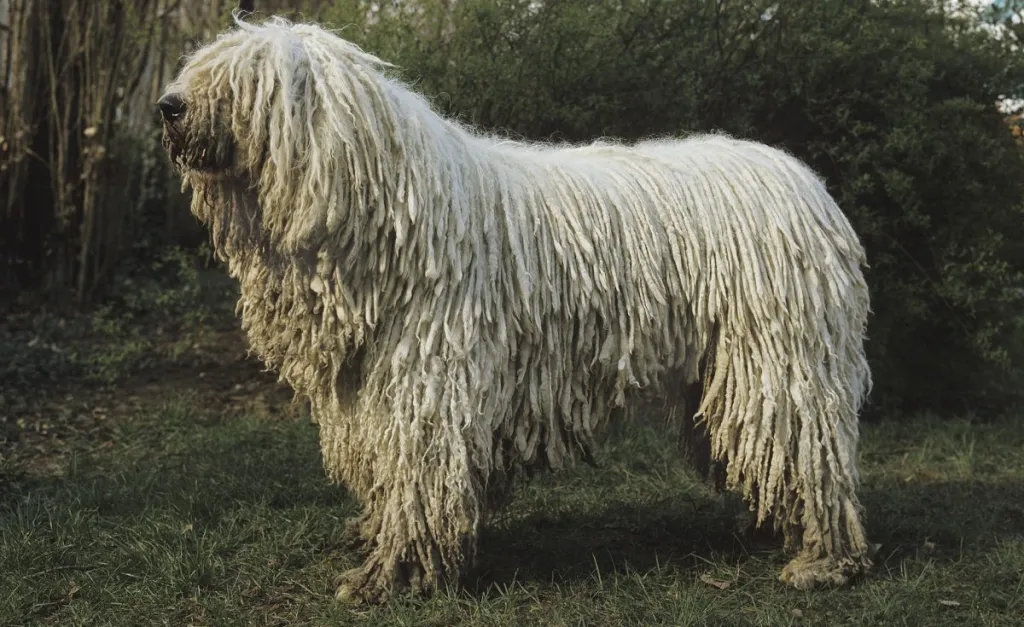
Prospective Komondor owners should know these dogs can inherit certain health conditions. Knowing about these health issues is vital to catch and manage them early. Breeders and dog owners need to monitor for signs of these problems proactively.
- Genetic Screening: Testing Komondor dogs for inherited diseases can help spot issues before they become serious.
- Breed-Specific Disorders: Being informed about the health problems common to Komondors can lead to quicker diagnosis and better outcomes.
- Health Maintenance: Regular vet visits and preventive care are vital in keeping these dogs healthy and avoiding developing genetic conditions.
Hereditary Health Issues
Komondors are susceptible to certain inherited conditions. These include hip dysplasia, which can cause pain and mobility issues, and entropion, where the eyelid rolls inward and potentially harms the eye. Another serious risk is bloat, a rapid and life-threatening stomach condition that requires urgent veterinary care.
To reduce these risks, it is essential to choose a reputable breeder. A reputable breeder conducts genetic tests and follows ethical breeding guidelines. This helps ensure that the puppies are less likely to inherit these conditions.
Additionally, owners need to commit to ongoing veterinary visits. These visits are essential for detecting and managing health concerns in their Komondors early. Regular check-ups and preventive care can help maintain the health and well-being of these dogs.
Common Genetic Disorders
Selecting a trusted breeder is critical in reducing the chance of hereditary health problems in Komondors. It’s vital to be aware of the typical genetic conditions that can affect this breed. Hip dysplasia is one such issue, leading to improper development of the hip joint and can cause pain and difficulty with movement.
Another concern is entropion, where the eyelid rolls inward, potentially causing eye discomfort or injury without surgical correction.
Bloat, also known as gastric dilatation-volvulus (GDV), is an urgent medical situation that can be fatal without quick veterinary care. Breeders need to perform comprehensive health checks to spot these problems early on.
Regular vet visits and ethical breeding can help manage these health risks. Knowledgeable future Komondor owners play a crucial role in maintaining the well-being of their dogs.
Preventive Health Strategies
Taking proactive steps is critical to reducing the chances of Komondor dogs developing health issues like hip dysplasia, entropion, and bloat.
Working with breeders who prioritize genetic testing and practice ethical breeding can help prevent these inherited conditions.
Regular vet visits and screenings are crucial for catching health problems early on.
Feeding Komondors a well-rounded diet and maintaining a proper exercise routine is essential to keep them healthy and avoid weight-related genetic problems.
Dog owners should learn about breed-specific health risks and stay updated on preventive health care to protect their Komondors.
Grooming Corded Coats
Caring for a Komondor’s coat involves attention to detail to keep their unique look and ensure their well-being. A critical part of their coat maintenance is using the proper washing methods to cleanse the skin and thorough drying to stop mildew from growing in their cords. It’s also essential to trim the coat regularly, especially around the mouth and feet, for the dog’s hygiene and comfort.
Knowing how to manage a corded coat is essential to prevent knots and snarls. Properly washing and drying the coat is vital to maintain its characteristic texture and avoid bad smells. A routine grooming schedule is necessary to sidestep issues like skin infections.
- It’s all about mastering coat maintenance to avert mats and tangles in your dog’s fur.
- The key is to perfect bathing and drying methods to keep the unique texture and smell fresh.
- Regular grooming is crucial to prevent skin problems and keep your dog healthy.
Understanding Cord Maintenance
Caring for a Komondor’s unique coat is a detailed process that keeps their skin and coat in top shape. Grooming the dog involves checking and separating the cords to prevent matting, which can harm the dog’s skin and lead to infections. After a bath, it’s critical to dry the coat completely to avoid mildew and to protect the dog’s skin and health. Removing trapped dirt and debris is also necessary to keep the coat clean. The grooming process requires skill and patience, as incorrect care can harm the coat’s appearance and the dog’s comfort and health. Keeping the coat functional and healthy is the primary goal.
In caring for the Komondor, avoid grooming shortcuts that could compromise their well-being. Regular cord care prevents uncomfortable tangling and maintains the dog’s appearance and comfort. Proper drying is necessary to thwart mildew growth, and debris must be removed to ensure cleanliness. Skilled grooming is vital, as mishandling the cords can harm the dog. The focus should be on a healthy, functional coat that keeps the Komondor happy and healthy.
Washing Corded Coats
Caring for a Komondor’s coat is unique due to its corded texture. Washing such a coat requires soaking it thoroughly and using dog shampoo that won’t harm the cords. It’s crucial to handle the cords delicately to prevent tangling while washing.
After the bath, it’s essential to squeeze out excess water from the cords because they can take a long time to dry out. Keeping the dog in a warm place with good air circulation helps avoid any musty smells.
Regular grooming around the face keeps the dog clean, and getting them used to grooming from a young age makes the process smoother.
Drying Techniques Post-Bath
To dry a Komondor’s unique coat after a bath, gently squeeze the cords to remove excess water and maintain the coat’s integrity.
Use a high-velocity dryer or a relaxed setting on a standard hairdryer, ensuring you aim the air at the skin under the cords.
When the coat is partly dry, take the time to separate and fluff each cord, promoting good airflow for even drying.
A stand dryer on a low setting can be helpful for a complete dry.
Let the Komondor air dry thoroughly in a warm, draft-free area before leaving to avoid musty smells or mildew growth.
Regular Coat Trimming
Regular grooming, including coat trimming, is vital for Komondor dogs to keep their unique corded coats in check. These cords can quickly become tangled and dirty if not properly maintained. Regular trims help prevent mats and preserve the dog’s skin health.
When trimming a Komondor, it’s important to carefully cut off just the ends without damaging the cords. This keeps the dog looking good and staying clean. Using the right tools for corded coats to avoid harm would be best.
Each Komondor is different, so the timing of trims will vary, but consistent grooming is critical for the dog’s well-being and appearance.
Preventing Matting Problems
Stick to regular grooming weekly to keep your Komondor’s unique corded coat in shape. Carefully separate each cord and check for dirt to avoid tangles. Use a metal comb or your hands to pull apart the cords gently. It’s essential to clear away any dirt or debris that might cause knots.
Bathing too often isn’t good because it can mess with the coat’s ability to dry and lead to more tangles. After a bath, ensure your dog is dehydrated to prevent mats from forming. Pay extra attention to areas where mats are likely to happen, like behind the ears and under the legs.
Dietary Requirements
The Komondor, known for its distinctive coat and large size, requires a diet that meets its unique needs to stay healthy. Feeding them high-quality proteins, healthy fats, and balanced carbohydrates is essential.
Keeping an eye on their weight is crucial since being overweight can worsen health issues common in larger breeds. They benefit from measured meal portions to avoid obesity and may need joint support supplements like glucosamine.
These help maintain their joint health, which is vital due to their size.
Komondor Nutritional Needs
Komondor dogs stand out with their unique corded coats and muscular builds, requiring a protein-rich diet to support their large size and muscle strength. Breed experts note that a well-rounded diet is crucial, providing essential nutrients such as omega-3 fatty acids to maintain healthy skin and fur and glucosamine to support active joints. These nutrients are vital to their overall health due to their propensity for activity and guarding.
Monitoring their dog food intake is essential to prevent obesity, which can significantly harm their health. Regular exercise with controlled feeding is necessary to keep their weight in check. For a diet plan that caters to their specific needs, it’s best to consult a vet. They can provide advice tailored to the dog’s age, size, and activity level.
Ideal Food Choices
Choosing the suitable proteins, fats, and carbohydrates is crucial for a Komondor dog’s diet. These large, muscular dogs need plenty of high-quality proteins to keep them strong. Essential fatty acids are a must for their unique coats and skin, and the right amount of carbohydrates keeps them energized for their activities.
The American Kennel Club highlights that Komondors are prone to hip dysplasia, so keeping them at a healthy weight and including joint-supportive nutrients in their diet is essential. To prevent bloat, a serious health risk, feeding them smaller meals throughout the day is best.
Dog owners should consult their vet to create a diet that’s just right for their Komondor. A balanced diet helps maintain a Komondor’s health and supports their active lifestyle. Regular vet check-ups and a tailored feeding plan can ensure your Komondor thrives.
Managing Weight & Health
A balanced diet is crucial for a Komondor’s overall well-being. It’s just as essential to manage their weight and meet their unique dietary needs to prevent obesity and related health issues. High-quality proteins are crucial for maintaining the Komondor’s muscular frame and overall health.
Monitoring how much food they get is vital to avoid overfeeding, as Komondors can quickly gain excess weight. This can lead to joint problems and decreased mobility. Regular physical activity, like daily walks and playtime, is essential for keeping these dogs fit and active.
As Komondors get older, their dietary needs change. It’s important to adjust their food intake to match their slower metabolism and reduced activity level. For a diet tailored to your dog’s specific health needs, it’s best to consult a vet or a dog nutritionist.
